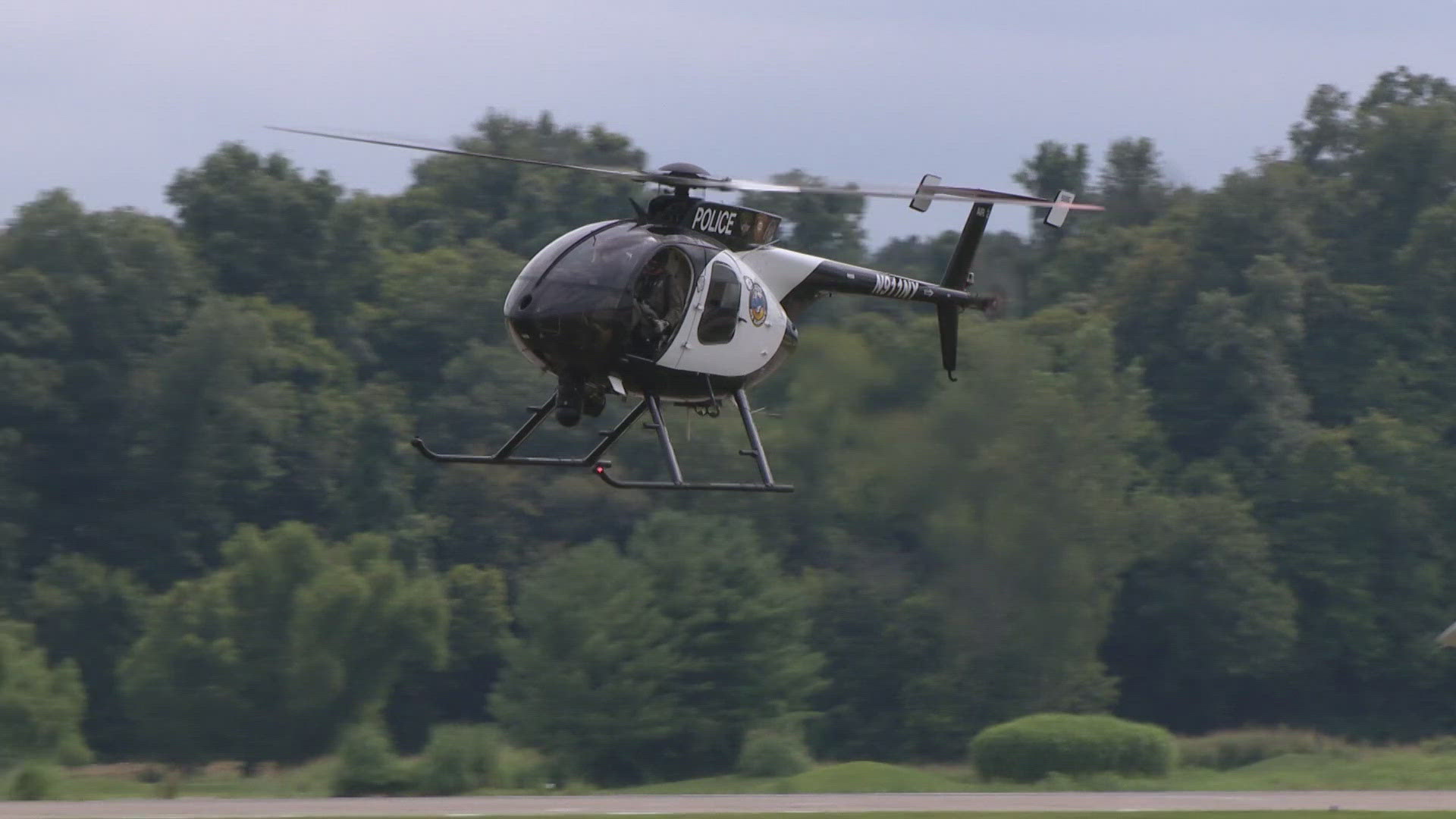ST. LOUIS — The Metro Air Support Unit is a police aviation unit that's been flying above St. Louis for 20 years. Their work reached new heights this summer.
In a new effort, St. Louis police captured a real-time ride along on social media using the hashtag #STLFlyAlong.
The unit is made up of officers from the St. Louis Metropolitan Police Department, the St. Louis County Police Department and the St. Charles County Sheriff’s Department.
The crown jewel? The unit's helicopters — an eye in the sky — that patrols 1,600 square miles.
"We wanted people to know what Metro Air Support provides for the St. Louis region, and we thought social media was the best tool to do that," said Mitch McCoy, a spokesperson for the St. Louis Metropolitan Police Department.
In the #STLFlyAlong, cameras captured the pursuit of a Tesla. Police said the car was driving dangerously.
Police reported Mobile Reserve and SWAT officers spotted the Tesla driving at a high rate of speed. After officers activated their lights and sirens, the car took off.
The Metro Air Support Unit monitored the suspect driving erratically on multiple city streets, including Interstate 70, until it was involved in a minor two-car accident near the 2200 block of Farrar Street.
After the minor crash, police said two men bailed from the Tesla and the chopper tracked them running on foot.
"Our officers were able to fall back. We didn't have to go at speeds of 115 mph or faster to keep up with that Tesla. Metro Air Support was able to safely follow and take two people into custody along with a gun," McCoy said.
St. Louis police officer Robert Simons has been with the department for 18 years. A decade ago, there was an opening for air support in the specialized unit and Simons took a chance. He explained it took three years or so to become a pilot.
"Just getting use to your bearings and directions, we’re doing lots of orbits and it’s crucial that we’re able to tell which direction we’re going or the suspect is going to properly relay that to officers on the ground," he said.
By the pilot's side is a tactical flight officer (TFO).
"The TFO does all the police stuff, talks to dispatchers (and) the guys on the ground, (and) directs all the officers on what we're searching for and chasing," Simons said.
The duo's second set of eyes is a heat-signature camera attached to the helicopter.
"We have the ability to pinpoint the address and say, 'He's hiding behind this (address),'" Simons said.
McCoy told 5 On Your Side this new route to showcase their work is a way to connect with residents on a different platform.
"We recognize that we have to build a stronger, better relationship with our citizens," McCoy added.
Simons believes in the mission of flying high to fight crime.
"Anytime I fly, I give the support and guidance on the ground as much as I can to show our value and what we can do to help out the officers that are on the street," Simons said.
St. Louis police are working on how to highlight different units. McCoy said there could be virtual ride-alongs in the future with police anti-crime detectives and patrol officers.

